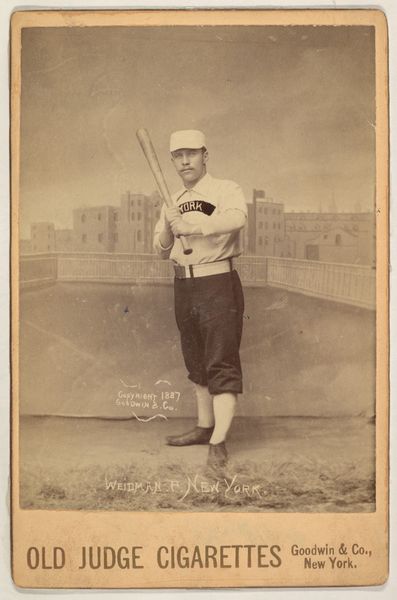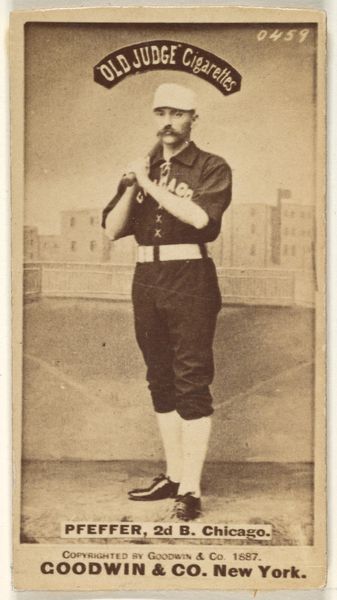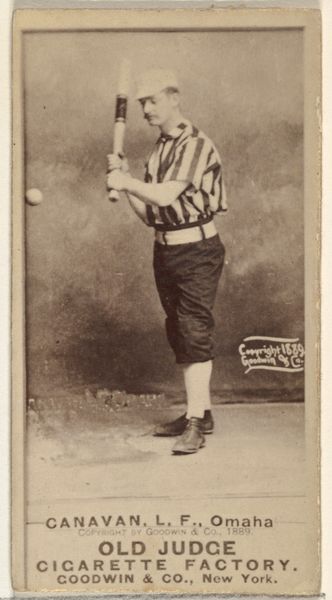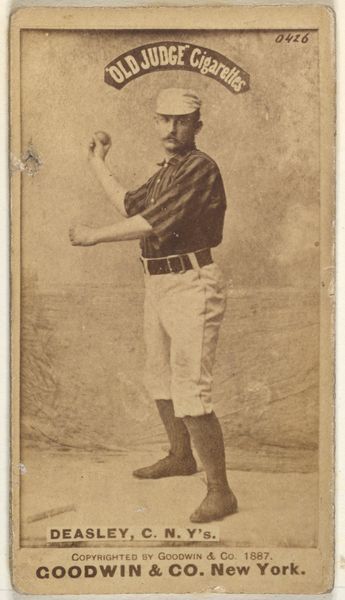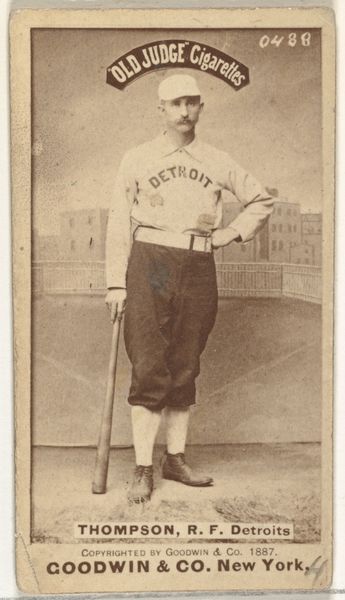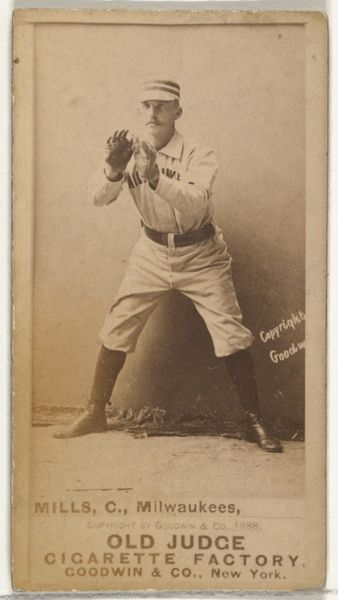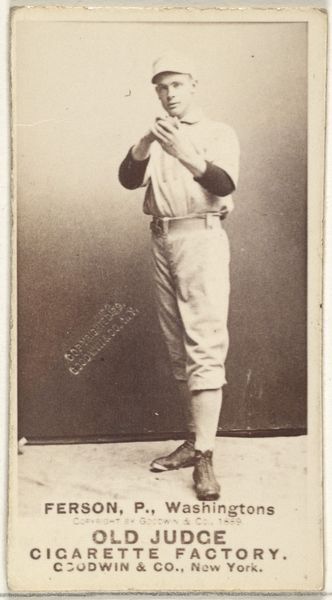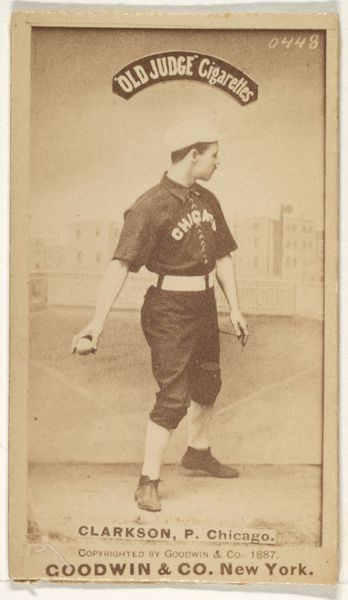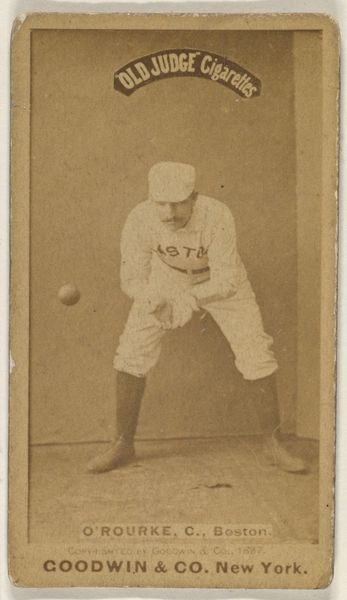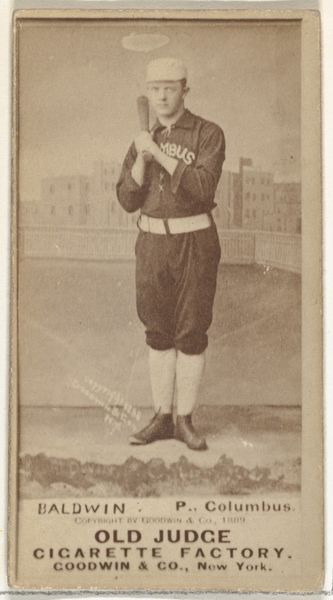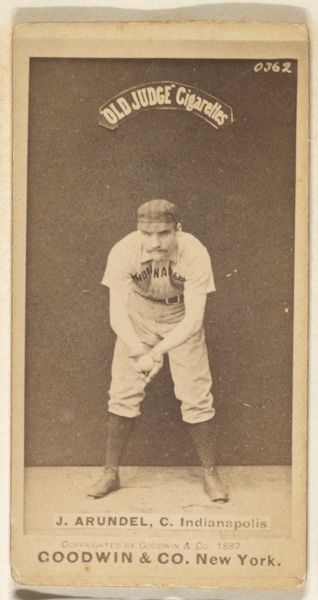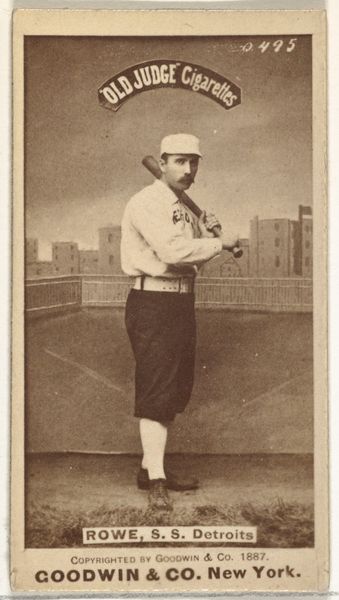
Charles William "Charlie" Ganzel, Catcher, Detroit Wolverines, from the Old Judge series (N172) for Old Judge Cigarettes 1887
0:00
0:00
print, photography, albumen-print
#
portrait
# print
#
baseball
#
photography
#
19th century
#
men
#
athlete
#
albumen-print
Dimensions: sheet: 2 11/16 x 1 3/8 in. (6.9 x 3.5 cm)
Copyright: Public Domain
Curator: This albumen print, produced in 1887, is a baseball card featuring Charles William "Charlie" Ganzel, a catcher for the Detroit Wolverines. It comes from the "Old Judge" series (N172) made by Goodwin & Company as promotional material for Old Judge Cigarettes. Editor: It's quite striking how this almost sepia-toned image captures a moment of poised anticipation; his focused gaze fixed on the ball he is ready to catch. It feels staged but still manages to evoke the gritty feel of early baseball. Curator: Indeed, the staging is significant. These cards weren't just innocent depictions of athletes; they were deliberately produced commodities, extensions of the Old Judge Cigarettes brand. Consider the production itself—photography was evolving, albumen printing offered relatively inexpensive reproduction, enabling mass distribution. Editor: It makes you wonder about the labour involved in both baseball and card production during that era. What were the working conditions like? Who was actually involved in posing Ganzel and churning out thousands of these prints? It ties the image back to real lives and tangible processes, not just romantic ideals about sport. Curator: Exactly. The card's distribution was tied to consumer culture of the late 19th century. Baseball's growing popularity, linked to the rise of industrial leisure, intertwined with advertising in complex ways. Collecting became a pastime itself, spurred by brands eager to secure customer loyalty. Editor: So, it becomes about far more than just a portrait of a baseball player. It represents emerging popular culture, consumption, the commodification of athleticism and photographic reproduction available to the masses. Seeing this card in the Met elevates it from commercial ephemera to a fascinating object of historical inquiry. Curator: I concur. The convergence of sport, advertising, and evolving printing techniques encapsulates a significant moment of social transformation, brought right here for us to explore. Editor: A reminder that these cards speak volumes, both about what they show and what went into making them.
Comments
No comments
Be the first to comment and join the conversation on the ultimate creative platform.
